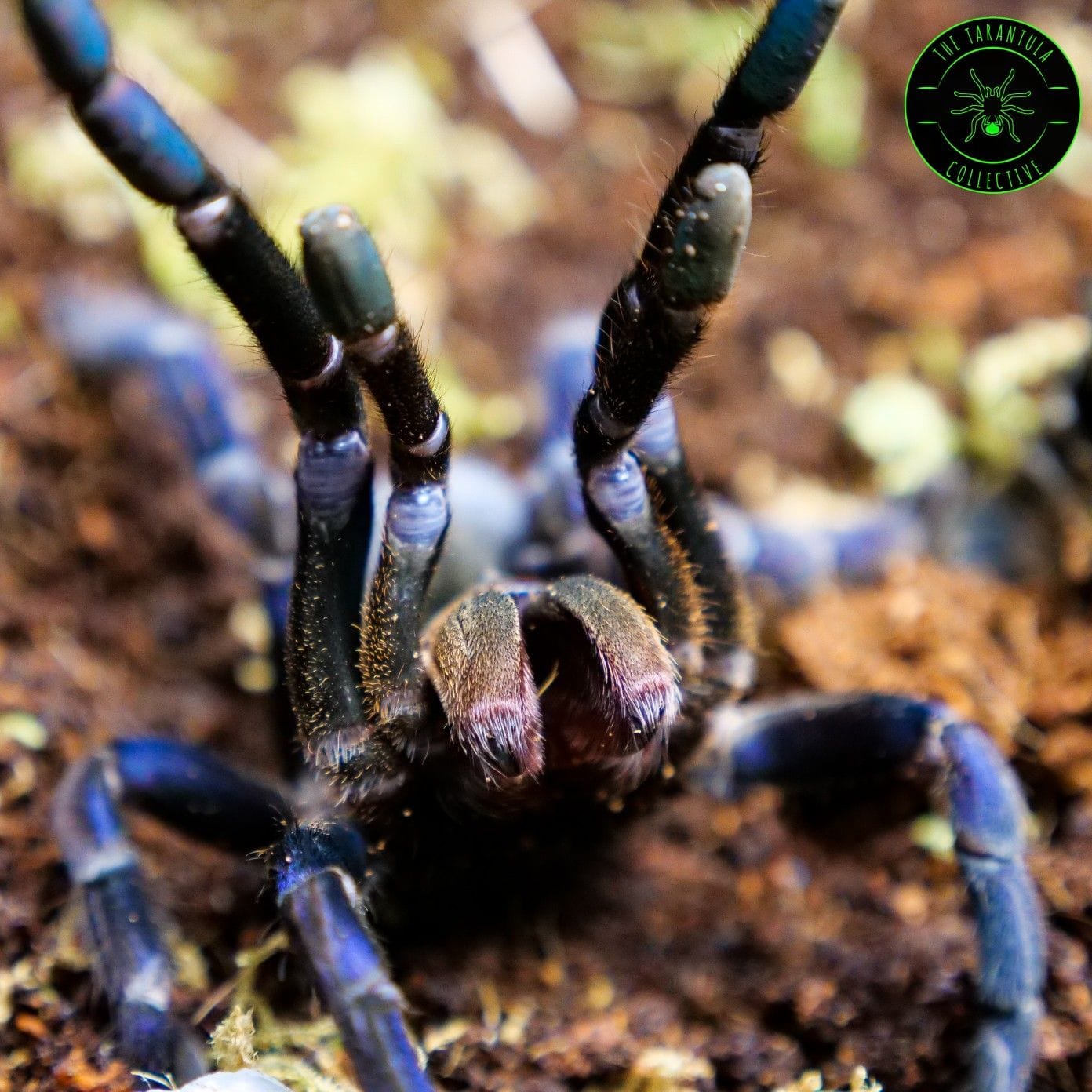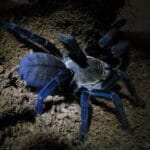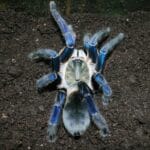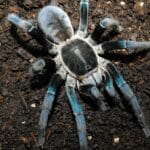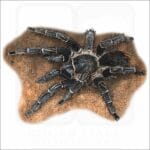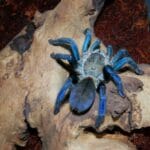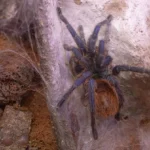The Cobalt Blue Tarantula: A Dazzling Jewel of Southeast Asian Rainforests. This creature, with its iridescent blue legs contrasting against a gray body, captivates the eye and sparks curiosity. Native to the tropical rainforests of Southeast Asia, particularly Myanmar and bordering regions of Thailand, the Cobalt Blue Tarantula (Cyriopagopus lividus) is a creature of fascinating beauty and formidable prowess. This comprehensive guide delves into the captivating world of these arachnids, exploring their natural history, behavior, and the responsibilities of ethical ownership.
A Closer Look: Unveiling the Cobalt Blue
While the common name “Cobalt Blue Tarantula” accurately captures their stunning leg color, their bodies tell a more subtle story. Sporting a light gray prosoma (cephalothorax) and opisthosoma (abdomen), some individuals may exhibit darker gray chevrons (V-shaped markings) on their abdomen, adding to their mystique. Reaching a respectable size, though not the largest of the tarantula family, adults typically boast a leg span of approximately 5 inches (13 cm). Interestingly, males and females appear remarkably similar until the male’s final molt, after which subtle differences emerge. But size and markings aside, it’s their behavior that truly sets them apart.
Beyond Color: The Life of a Skilled Predator
More Than Just Blue: Unraveling the Complex Life of a Skilled Predator. The Cobalt Blue Tarantula is a creature of the night. Their nocturnal nature dictates their movements as they spend their days secluded in deep burrows meticulously constructed within the rainforest floor. These burrows are more than just homes; they are strategically positioned hunting grounds.
As ambush predators, Cobalt Blue Tarantulas lie in wait near their burrow entrances, relying on their incredible speed and potent venom to capture unsuspecting prey. They are masters of vibration, using subtle tremors in the earth (seismic communication) to detect the movements of both prey and potential threats. Their diet consists primarily of insects, other spiders, and the occasional small vertebrate that wanders too close to their concealed lairs.
While their venom is a formidable weapon for subduing prey, it’s important to note that they are not aggressive creatures by nature. Their bites, while painful due to the size of their fangs and the venom injected, are typically not medically significant to humans.
Do you wish to learn more about the beautiful, yet deadly blue poison dart frog dendrobates azureus and its captivating evolutionary adaptations? Dive deep into the enchanting world of marine life, where the majestic beluga whale dory calls the ocean depths its home.
Love and Danger: The Delicate Dance of Reproduction
The life of a male Cobalt Blue Tarantula is fraught with risk, especially when it comes to mating. After a delicate dance of courtship, the larger female may exhibit surprising aggression, sometimes even cannibalizing the male after copulation. If he’s lucky enough to escape this grisly fate, the female will devote herself to the creation of a silken egg sac, containing dozens of tiny tarantulas.
Unlike many spider species, the mother Cobalt Blue Tarantula displays remarkable parental care. She fiercely guards the egg sac, ensuring the safety of her offspring, and may even share food with her spiderlings until they are old enough to fend for themselves. These fascinating glimpses into their reproductive behaviors highlight the complex social dynamics within this species.
Captive Care: Navigating the Demands of Responsible Ownership
Responsible Ownership: A Guide to Providing for this High-Maintenance Marvel. The Cobalt Blue Tarantula’s striking appearance has made it a sought-after species in the pet trade. However, they are not a suitable choice for beginners or those unprepared for the demands of caring for such a specialized creature. Their quick, defensive nature, coupled with their specific environmental requirements, necessitates an experienced hand.
Creating a Rainforest Haven: Replicating their natural environment is crucial for their well-being in captivity. A secure terrarium with ample substrate for burrowing is essential, providing them with a sense of security. Maintaining high humidity levels (70-80%) and consistently warm temperatures (around 75-82°F) is vital to mimic their tropical rainforest origins. Proper ventilation ensures fresh air circulation, preventing the growth of mold and other harmful microorganisms.
A Diet of Live Prey: Captive Cobalt Blue Tarantulas thrive on a diet of live insects, mirroring their wild feeding habits. Crickets, roaches, and mealworms are all readily available from reputable pet stores and provide essential nutrients.
Handling with Caution: Due to their speed, agility, and defensive nature, handling Cobalt Blue Tarantulas is best avoided whenever possible. Even experienced keepers approach interactions with caution, as they are known to bite if they feel threatened. They also possess urticating hairs on their abdomen, which they can flick towards perceived threats. These hairs cause irritation upon contact with skin or eyes and can pose respiratory risks to some individuals.
A Future Uncertain: Conservation and Ethical Considerations
Beyond the Bite: Dispelling Myths and Understanding the True Nature of the Cobalt Blue Tarantula. As with many rainforest inhabitants, the Cobalt Blue Tarantula faces an uncertain future. Habitat loss due to deforestation, driven by logging and agriculture, poses a significant threat to their wild populations. Conservation efforts are crucial to ensure these dazzling creatures continue to grace our planet.
Beyond conservation in the wild, responsible pet ownership plays a crucial role in the well-being of this species. It is essential to prioritize captive-bred individuals from reputable breeders, reducing the demand for wild-caught tarantulas. By supporting sustainable practices and promoting ethical ownership, we can help ensure the survival of these magnificent creatures.
Conclusion: Guardians of a Fragile Beauty
The Cobalt Blue Tarantula is more than just a stunning display of color; it is a testament to the intricate web of life that thrives within our planet’s rainforests. By understanding their complex behaviors, ecological roles, and the threats they face, we can become better stewards of their future. Through responsible ownership, informed care practices, and a commitment to conservation, we can ensure that these captivating creatures continue to inspire awe and wonder for generations to come.
